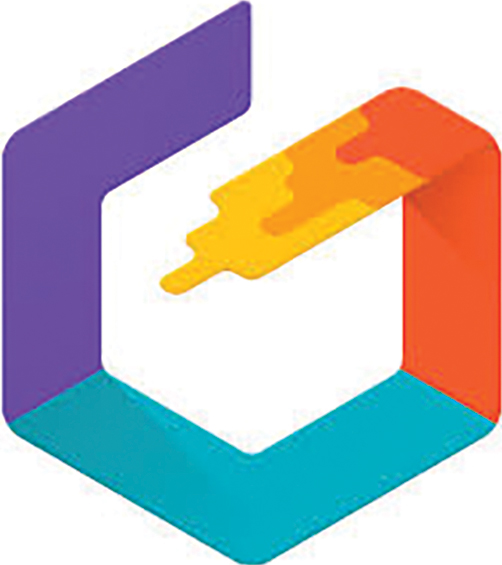Tech Talk
Virtual Field Experiences
Science and Children—September/October 2020 (Volume 58, Issue 1)
By Heather Pacheco-Guffrey
In this issue of Science and Children, we consider what lies “beyond the field trip.” Given the pandemic, field trips may look quite different for a while. Let’s take this time to look “beyond” them, to what we have available now. Technology can offer fantastic ways to keep students connected with the outside world. Whether students are learning remotely or face-to-face with you in class, the apps in this issue are great choices for connecting students with the world around them.
Tal, Lavie Alon and Morag (2014) studied many elementary school field trips and identified the following four characteristics of high-quality (in person) field trips to natural places: Activity and Action: Engage learners in discussions about phenomena observable on the field trip. Provide opportunities for multisensory learning. Engage students in actions to care for the environment (e.g., trash pickup). Involved Teachers: Build bridges between the field trip, the curriculum, and what you know about your students to ensure learning goals are met. Share your personal stories as well! Using the Environment: Be enthusiastic about students’ discoveries even if they are off topic. Offer praise when students notice details of the world around them. Field Trip as Social Learning: Allow students to share their ideas and experiences about the field trip and generally what is going on in their everyday lives.
Many aspects of these high-quality strategies are relevant for virtual field excursions as well. In the sections below you will learn how to make a virtual field trip for second graders to launch their learning about habitats right in their own community! You’ll then learn about an immersive virtual field excursion in which fourth graders can build background knowledge to support their learning about glaciers and erosion.
Google Tour Creator
What is Google Tour Creator all about?

Google Tour Creator gives you and your students a fun way to bring interactive images together to make virtual reality field trips (VRFTs). VRFTs comprise 180- or 360-degree images that you can create on your own or select from Google Maps’ incredible repository of “street views.” Creating VRFTs is fun and surprisingly uncomplicated. Using VRFTs is a great way for your students to investigate the world beyond the classroom.
What’s good about Google Tour Creator?
The free web-based Google Tour Creator app allows you to create and view VRFTs on any internet-enabled device. The app integrates with Google Drive, making your VRFTs easy to access, store, and share. Embed your own text and audio files in the language(s) of your choice to expand accessibility. Creator also integrates with Google Expeditions.
How can you use Google Tour Creator?
The Google Tour Creator app is perfect for creating engaging experiences for young learners in two ways. First, you can create VRFTs of anywhere you can use your camera-enabled mobile device. Your own community can feature prominently. Foster excitement and interest by creating a VRFT to investigate new questions in familiar places.
Google Tour Creator also turns your 180- and 360-degree images into interactive scenes for your VRFTs. Students can view them on standard device screens by panning around the scenes or through the Google Expeditions’ “view” or VR options, the latter of which works with a VR headset such as Google Cardboard (see Pacheco-Guffrey 2020 for details). Once you have populated your VRFTs with scenes, enrich your students’ experience by adding “points of interest” with text, audio (.mp3), and photos. Immerse your students in the VRFT experience by embedding music or real-world sounds within scenes as well.
Next Generation Science Standards (NGSS) performance expectation 2-LS4-1 has students making “observations of plants and animals to compare the diversity of life in different habitats” (NGSS 2013). Most students in our nation live in human-engineered environments such as cities, towns, and even farms. Traditional lessons about habitats and the environment present them as places outside or separate from the human-designed world. However, both between and within human-designed areas, we find habitats where organisms live and thrive.
With a mix of Google Maps “street views” and your 180-/360-degree photos, use Google Tour Creator to make your own VRFT for your second graders featuring different habitats around their community. Include city/town parks, shorelines, farms, city blocks, town centers, school grounds—places in the community that will be familiar to students. Group students 2:1 with devices, 1:1 working in pairs, or keep them whole-group. Take advantage of the opportunity to build children’s sense of connection with their community. Share concrete ways the children can be proactive in ensuring places in their community are cared for. Here are some ideas for engaging your young learners in NGSS science and engineering practices. Find links to apps, resources, and NGSS@NSTA performance expectations for each practice under Internet Resources.
- Planning and Carrying Out Investigations. Guide students’ VRFT investigation of community-based habitats with inquiry questions such as: “What lives in each habitat?” and “How do the habitats compare?” (Note: no need to identify specific organisms). Clearly label each habitat scene in your VRFT and have students respond on paper or digital datasheets with the same habitat labels. Stay involved when your students are on their VRFT. Keep it noisy! Talk with students about their findings and give them the chance to talk with each other as well. Encourage them to notice the world around them in the VRFT.
- Constructing Explanations. 2-LS4-1 includes comparisons of the diversity of life in different habitats. Plants are easy to observe in habitat scenes of your VRFT. Encourage students to notice the diversity of plants in each habitat (e.g., trees and shrubs and grass vs. just a few trees, no shrubs or grass). Introduce “diversity,” framing it as a strength and then ask students, “Which habitat is the most diverse?” Have students substantiate their claims comparing plant diversity across habitats using VRFT evidence. Bring students together around a computer projection of your VRFT to share evidence they are using to build explanations.
Pro Tips
You do not need a specialized camera to create photos for your VRFTs; instead, use the panorama camera setting on smartphones / tablets or a low-cost panorama app. The Panorama 360 app from Occipital (2020), available for iOS and Android, produces better, less distorted images than my iPhone camera’s “pano” setting.
| Google Tour Creator | ||||||||||||||||||||||||||||||
|---|---|---|---|---|---|---|---|---|---|---|---|---|---|---|---|---|---|---|---|---|---|---|---|---|---|---|---|---|---|---|
|
Google Arts and Culture: Hidden Worlds
What is Google Arts and Culture: Hidden Worlds all about?

The Google Arts and Culture (GA&C) app is a goldmine of multimedia resources for exploring many facets of our human experience. Hidden Worlds is a “theme” within GA&C. It will bring you and your students on a virtual journey into the sights, sounds, and experiences of field excursions to four spectacular national parks.
What’s good about Google Arts and Culture: Hidden Worlds?
Web-based Hidden Worlds is accessible by any internet-connected device. The virtual tours offer interactive experiences that engage your senses and invite you to form connections with these remarkable places. Pan around the 360º videos/photos to discover your surroundings, explore embedded video/audio links, explore your own interests, and progress to other tour stops. Passionate, diverse park rangers lead these virtual tours, sharing their stories and love of the parks. Wonderment abounds!
| Google Arts and Culture: Hidden Worlds | ||||||||||||||||||||||||||||||
|---|---|---|---|---|---|---|---|---|---|---|---|---|---|---|---|---|---|---|---|---|---|---|---|---|---|---|---|---|---|---|
|
How can you use Google Arts and Culture: Hidden Worlds?
Teaching fourth graders about the effects of weathering and rates of erosion (4-ESS2-1) can be a fun (and messy!) hands-on learning unit. However, I find they have difficulty grasping what glaciers are, limiting their ability to understand the role of glaciers in erosion. GA&C: Hidden Worlds includes a virtual excursion to glaciers in Alaska’s Kenai Fjords National Park. The immersive experiences on the Kenai trip will help your learners build background knowledge to better understand glaciers as agents of erosion.
Bring this virtual excursion into learning after students have explored weathering and erosion by other agents (e.g., vegetation, wind). Start out device-free for a whole-group brainstorm to learn what students already know about glaciers. Pose questions like, “What are glaciers made of?” “What do glaciers look like?” “Do glaciers ever change?” “Where can we find glaciers?” and “What would glaciers look like on a map?” Transition to internet-connected devices for a glacier hunt using Google Earth or Google Maps (both free and accessible on all devices). Note that these apps will show glaciers, masses of moving ice on land, but not sea ice. It’s a perfect opportunity to discover which pole is covered in land! Support student social learning and troubleshooting by grouping students 2:1 with devices or 1:1 working in pairs. Come back together to have students use the classroom projection of the map app to share findings from the hunt and identify where glaciers are found today. Introduce Kenai Fjords National Park virtual trip. Here are ideas for engaging learners in NGSS science and engineering practices as students investigate glaciers. Find links to apps, resources, and NGSS@NSTA performance expectations for each practice under Internet Resources below.
- Planning and Carrying Out Investigations: Understanding that glaciers move is key to understanding glaciers as agents of erosion, transporting sediments across the surface of our planet. Hidden Worlds provides a virtual field lab for students to investigate glacial movement. Launch the Kenai Fjords virtual field trip with the question, “Do glaciers ever change?” and have students collect evidence throughout the tour to support their claims. Before letting them loose, take a few moments to climb down into the glacial crevasse with students to show them how to interact with the 360º pictures and videos. Consider including a graphic organizer for data collection with section titles that match the sections of the tour along with writing supports as needed. Students will learn different ways that glaciers change, including that they move downslope under the force of gravity, which is key for their role in erosion.
- Analyzing and Interpreting Data: Evidence that glaciers are agents of erosion is present in most images of glaciers; they look “dirty” because they are full of the rocks and soil they entrain as they move over new ground. Advancing glaciers transport (erode) this sediment as they flow downslope. As glaciers melt and recede, they deposit these once-entrained sediments, sometimes far from home. Students do not need to make the connection between the “dirty” appearance of glaciers and glaciers as agents of erosion while working in the Hidden Worlds app. But this is a terrific place for them to collect and analyze data about glaciers’ appearance to build upon in subsequent lessons about glaciers and erosion. Ask students to collect data during their tour to answer, “What do glaciers look like?” Back in whole group, after sharing their findings, ask students why they think glaciers appear to be “dirty.” This is a perfect segue into a follow-up lesson focusing on glaciers as agents of erosion!
Pro Tips
Audio is important with Hidden Worlds so headphones are helpful. Captioning is available in the bottom right menu. Though you can pause tour audio, you must refresh the browser window to replay audio. Have students use Google Chrome for best performance.
Internet Resources
Links to App Websites
Google. Google Arts and Culture: Hidden Worlds
https://artsandculture.google.com/project/national-park-service
Google. Google Earth
https://www.google.com/earth
Google. Google Expeditions
https://edu.google.com/products/vr-ar/expeditions/?modal_active=none
Google Maps
https://www.google.com/maps
Google Tour Creator
https://arvr.google.com/tourcreator
NGSS Lead States. 2013. Next Generation Science Standards: For states, by states. Washington, DC: National Academies Press.
Occipital Inc. 2020. Panorama 360. Retrieved from http://360.io
Performance expectations for science and engineering practices from NGSS@NSTA
Analyzing and Interpreting Data
https://ngss.nsta.org/Practices.aspx?id=4
Constructing Explanations and Designing Solutions
https://ngss.nsta.org/Practices.aspx?id=6
Planning and Carrying Out Investigations:
https://ngss.nsta.org/Practices.aspx?id=3
Heather Pacheco-Guffrey (HPACHECOGUFFREY@bridgew.edu) is an associate professor and researcher of science/engineering methods and technology applications in STEM for elementary and early childhood teachers at Bridgewater State University in Bridgewater, Massachusetts. Send her an email with technologies you’d like to see highlighted, questions you have about technologies, or experiences you’d like to share!
Pedagogy Technology Early Childhood Elementary


